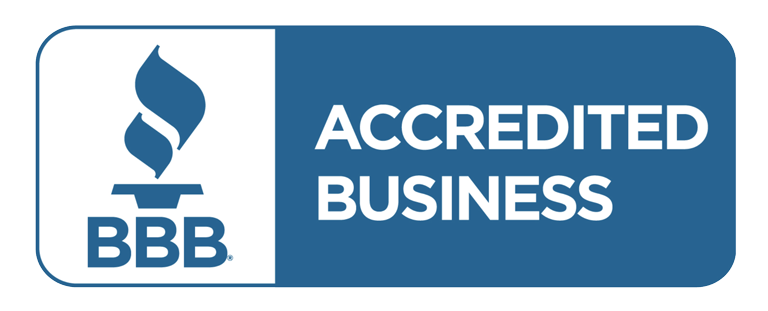Professional Hydroseeding in Winnipeg
Spray-On Grass for Lawns & Erosion Control
Get Your Free hydroseeding Quote TodayThe Sodfather offers professional hydroseeding services in Winnipeg and surrounding Manitoba areas, providing fast, affordable lawn establishment for large properties, slopes, and erosion-prone landscapes. Our hydroseeding process uses a specialized slurry of seed, mulch, fertilizer, and tackifier to promote rapid germination and superior soil stabilization across the Prairies.
Get Your Free Hydroseeding Quote Today
📞 (204) 999-9951 | 📧 troy@thesodfather.ca
✅ Why Choose Hydroseeding in Winnipeg?
Hydroseeding offers Winnipeg homeowners and commercial properties a superior alternative to traditional seeding and expensive sod installation. Our spray-on grass method delivers:•
- Faster Results: Germination in 5-10 days vs. 2-3 weeks for broadcast seeding
- Cost-Effective: 50-75% less expensive than sod installation
- Superior Coverage: Even application reaches slopes and hard-to-access areas
- Better Erosion Control: Tackifier and mulch prevent soil washout during Prairie storms
- Custom Seed Blends: Tailored for Manitoba’s climate and soil conditions
💧 What is Hydroseeding?
Hydroseeding is a planting process that combines grass seed, fertilizer, mulch, and water into a slurry mixture that’s sprayed onto prepared soil using specialized equipment. The mulch acts as a protective blanket while tackifying agents help the mixture adhere to slopes and compacted surfaces.
This method creates ideal growing conditions by maintaining consistent moisture, preventing seed displacement, and providing immediate erosion protection, making it perfect for Winnipeg’s variable weather conditions.
💡 Who Needs Hydroseeding Services?
New Construction Properties
Building a new home in Winnipeg? Hydroseeding establishes beautiful lawns in under 3 weeks, saving thousands compared to sod installation while providing superior root development.
Steep Slopes & Erosion Control
Our erosion control seeding bonds directly to soil using tackifier and wood fiber mulch, preventing washout on slopes, berms, and drainage areas common in Manitoba landscapes.
Commercial Property Restoration
Large commercial lots, industrial sites, and municipal projects benefit from our high-speed application that covers vast areas quickly and cost-effectively.
Fire & Environmental Remediation
Native grass blends and low-maintenance seed mixes help restore vegetation after fire damage or environmental disruption, supporting natural prairie ecosystem recovery.
Challenging Soil Conditions
Clay soil and compacted sites throughout Winnipeg benefit from our moisture-retentive mulch and soil stabilizers that improve growing conditions.
Expert Services
🛠️ Our Professional Hydroseeding Process
Site Preparation & Soil Analysis
We clear debris, perform rough grading, and test soil pH, compaction levels, and drainage to ensure optimal growing conditions for your Winnipeg property.
Learn moreCustom Slurry Development
Our team blends cellulose mulch, starter fertilizer, tackifier, and climate-appropriate grass seed into a nutrient-rich slurry designed for Manitoba growing conditions.
Learn moreProfessional Application
Using commercial-grade spraying equipment, we apply the mixture with precise pressure control to ensure even coverage and prevent runoff on slopes.
Learn moreGermination Support Plan
We provide detailed watering schedules and maintenance guidelines to maximize sprout success within 5-10 days of application.
Learn moreFollow-Up Services (Optional)
Large areas or shaded zones may benefit from overseeding to achieve perfect coverage and density.
Learn more👷 Hydroseeding Applications We Serve
Our Winnipeg hydroseeding crews handle diverse projects, including:
- New residential and commercial construction lawns
- Steep slope stabilization and coverage
- Roadside vegetation and highway projects
- Municipal parks and recreation fields
- Golf course rough areas and edges
- Septic mound and berm restoration
- Pipeline and excavation site reclamation
- Dust suppression for industrial sites
🔑 Premium Hydroseeding Components
Seed Blends for Manitoba Climate
- Tall Fescue for drought tolerance
- Perennial Ryegrass for quick establishment
- Creeping Red Fescue for shade areas
- Kentucky Bluegrass for a premium appearance
- Native prairie grass mixes for naturalization
Professional-Grade Materials
- Cellulose or wood fiber mulch for moisture retention
- Starter fertilizer optimized for Prairie soils
- Tackifier and binding agents for slope stability
- Soil stabilizers for erosion-prone areas
- Organic additives for enhanced root development
👉 Why Choose The Sodfather for Winnipeg Hydroseeding
The Sodfather brings precision engineering and commercial-scale capabilities to every hydroseeding project in Winnipeg and Southern Manitoba. We’re not just a seeding service – we’re turf specialists who understand Prairie growing conditions.
Our Competitive Advantages
- Certified erosion control contractors with Manitoba licensing
- Commercial-scale equipment handling projects from residential to highway-scale
- Fully insured and bonded with experienced local crews
- Integrated services including land grading, weed control, and irrigation
- DOT-approved for municipal and government projects
Frequently Asked Questions About Hydroseeding
What is hydroseeding, and how does it work?
Hydroseeding is a spray-on lawn planting method using a slurry of seed, mulch, and fertilizer for fast growth and erosion control. The hydroseeding process mixes grass seed, fertilizer, mulch, and water into a protective slurry that’s sprayed onto prepared soil. The mulch creates an ideal growing environment while tackifier helps the mixture adhere to slopes and compacted areas, providing faster germination and superior erosion control compared to traditional seeding methods.
Is hydroseeding better than traditional broadcast seeding?
Yes, hydroseeding is better than traditional broadcast seeding because it offers faster germination (5-10 days vs 2-3 weeks), superior seed-to-soil contact, better moisture retention, and built-in erosion protection. Hydroseeding also protects seeds from birds and wind displacement through its protective mulch blanket, resulting in more uniform grass coverage.
How long does hydroseed take to grow in Winnipeg’s climate?
Hydroseed takes 5-7 days to sprout and 3-4 weeks for full establishment in Winnipeg’s climate. How long hydroseed takes to grow depends on weather conditions, soil quality, and consistent watering, but Manitoba’s growing season from late April through early September provides excellent conditions for rapid hydroseeding success.
Can I walk on freshly hydroseeded areas?
You cannot walk on freshly hydroseeded areas for the first 2-3 weeks to allow proper root establishment. Walking on hydroseeded grass is acceptable after 3 weeks for light foot traffic, with normal use resuming after 6-8 weeks when the grass is fully established and mature.
When is the best time for hydroseeding in Winnipeg?
The best time for hydroseeding in Winnipeg is late spring (May-June) and early fall (August-September) when temperatures are moderate and moisture levels are consistent. When to hydroseed depends on weather conditions, but these periods offer optimal germination while avoiding summer heat stress and winter dormancy.
How much does hydroseeding cost compared to sod?
Hydroseeding costs 50-75% less than sod installation while providing superior root development and long-term durability. How much hydroseeding costs depends on project size, terrain difficulty, and seed blend selection, but it consistently offers better value than sod. Contact us for a free quote specific to your property requirements.
💬 Safety & Environmental Commitment
Our hydroseeding materials are completely biodegradable, non-toxic, and safe for children, pets, and wildlife. We follow all Manitoba environmental guidelines and EPA standards for seeding near waterways, roads, and environmentally sensitive areas.
The Sodfather is committed to sustainable landscaping practices that support Manitoba’s natural ecosystem while delivering beautiful, functional turf solutions.
| Maintenance Task | Frequency | Instructions |
| Initial Watering | 2–3 times daily (first 2 weeks) | Keep the hydroseeded area consistently moist without puddling. |
| Post-Germination Watering | 3–4 times/week | Water deeply in early morning; adjust based on rainfall and soil type. |
| First Mowing | When grass reaches 3–4 inches (usually 3–4 weeks) | Ensure blades are sharp; do not remove more than ⅓ of grass height. |
| Fertilizing | 4–6 weeks after seeding, then seasonally | Use starter fertilizer first, then switch to nitrogen-rich blends for growth. |
| Foot Traffic Restriction | First 4–6 weeks | Avoid walking or driving on the area to prevent seed displacement or damage. |
| Weed Control | After 6 weeks | Hand-pull weeds or apply selective herbicide only after lawn establishment. |
| Overseeding | As needed (patchy areas) | Reapply hydroseed mix or overseed manually for spot repairs. |
| Pest Monitoring | Weekly | Check for signs of insect activity or fungal disease; treat early. |
| Mulch Breakup (if needed) | As the lawn grows in | Lightly rake or break up mulch that remains after germination. |
| Soil Testing | Every 2–3 years | Test pH and nutrients to guide fertilization and soil health practices. |
| SERVICE TYPE | RELATED APPLICATIONS | COMMON FEATURES |
| Residential Lawn Seeding | New Homes, Lawn Replacement | Quick Germination, Uniform Coverage, Lower Cost than Sod |
| Commercial Site Seeding | Large-Area Coverage | Erosion Control, Municipal Projects, Roadside Planting |
| Erosion Control Hydroseeding | Slopes, Ditches, and Banks | Fiber Mulch, Tackifiers, Seed Mix for Stabilization |
| Athletic Field Seeding | Sports Fields, Parks | Durable Turf Blends, Even Distribution, Rapid Coverage |
| Custom Seed Blends | Climate or Soil-Specific Needs | Sun/Shade Mixes, Native Grasses, Drought-Tolerant Options |
| Soil Amendment Application | Pre-Seeding Enhancement | Lime, Starter Fertilizer, Compost for Healthier Soil |
| Topsoil Spreading | Surface Preparation | Screened Topsoil, Light Compaction, Leveling |
| Straw or Bonded Fiber Mulch | Post-Seeding Protection | Moisture Retention, Erosion Prevention, Seed Insulation |
| Re-Hydroseeding | Spot Repairs, Failed Growth Areas | Targeted Application, Patch Repair, Fast Regrowth |
| Irrigation Planning | Post-Install Water Management | Timers, Sprinkler Layout, Watering Guidelines |
| Safety Aspect | Description | Precautions | Potential Hazards |
| PPE (Personal Protective Equipment) | Gloves, boots, eye protection | Worn during mixing, spraying, and chemical handling | Skin irritation, Eye injuries |
| Sprayer Operation | Use of hydroseeding equipment | Operator training, Ground stability checks | Hose pressure injuries, Equipment malfunction |
| Chemical Handling | Fertilizers, tackifiers, and seed additives | Proper labeling, safe storage, protective gear | Poisoning, Respiratory issues |
| Hose Management | Use of high-pressure hoses | Avoid kinks and trip zones, Secure connections | Trip hazards, Back strain |
| Mixing Procedures | Combining seed, mulch, and additives | Follow manufacturer ratios and mixing instructions | Exposure to fumes, Splashes |
| Noise Exposure | Pump systems and machinery | Wear ear protection during extended operation | Hearing loss, Fatigue |
| Lifting & Ergonomics | Moving mulch bags, buckets, and equipment | Use team lifts, proper form, carts when possible | Back injuries, Strain |
| Weather Exposure | Outdoor job site hazards | Hydrate, apply sunscreen, wear proper clothing | Dehydration, Sunburn, Heat stroke |
| Slip & Trip Hazards | Slip & Trip Hazards Wet areas, equipment hoses | Maintain clear paths, place signage on wet slopes | Falls, Sprains |
| Environmental Protection | Runoff, chemical spills | Avoid overspray near water bodies, use eco-friendly materials | Water contamination, Soil damage |
Testimonials
What our valued Client have to say
Ready to Transform Your Winnipeg Property?
Whether you’re establishing a new lawn, controlling erosion, or restoring a damaged landscape, The Sodfather’s professional hydroseeding delivers results you can count on. Our experienced Manitoba crews understand local soil conditions, climate challenges, and the specific requirements for successful grass establishment in the Prairie provinces.
Get Your Free Quote Today
(204) 999-9951
troy@thesodfather.ca
106 De Vos Rd, Winnipeg, MB
Serving Winnipeg, Headingley, and surrounding Manitoba communities with professional hydroseeding excellence.



